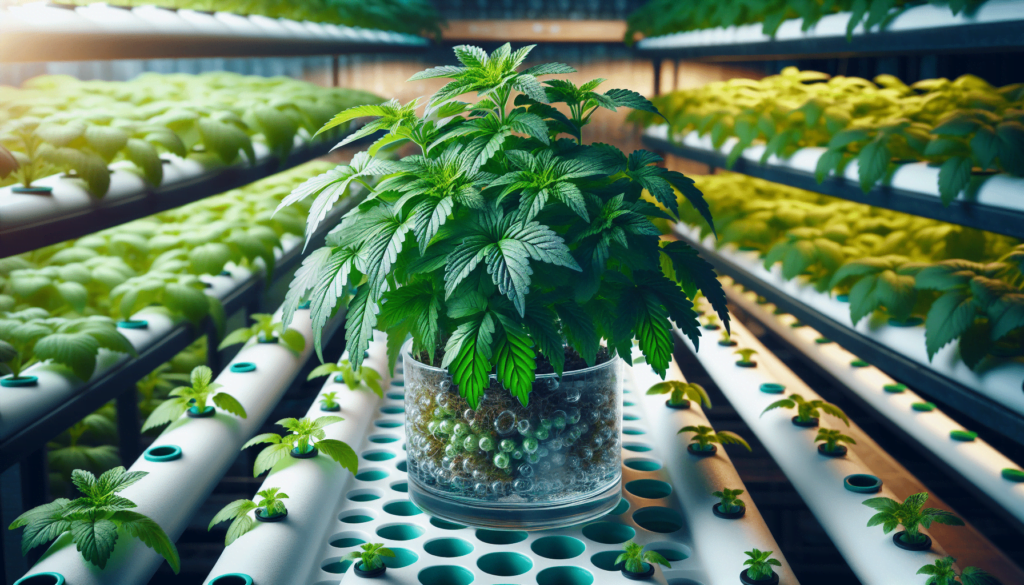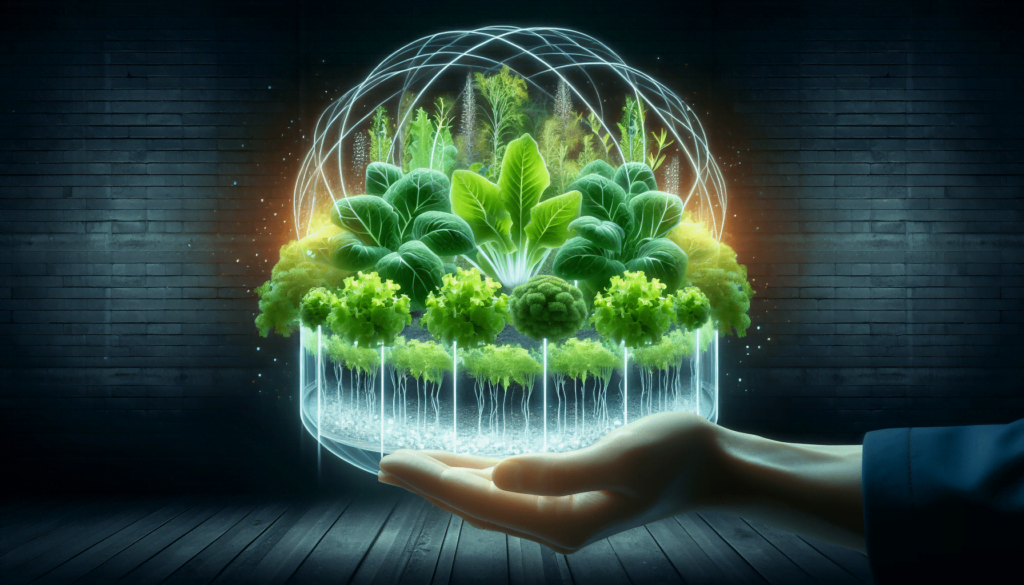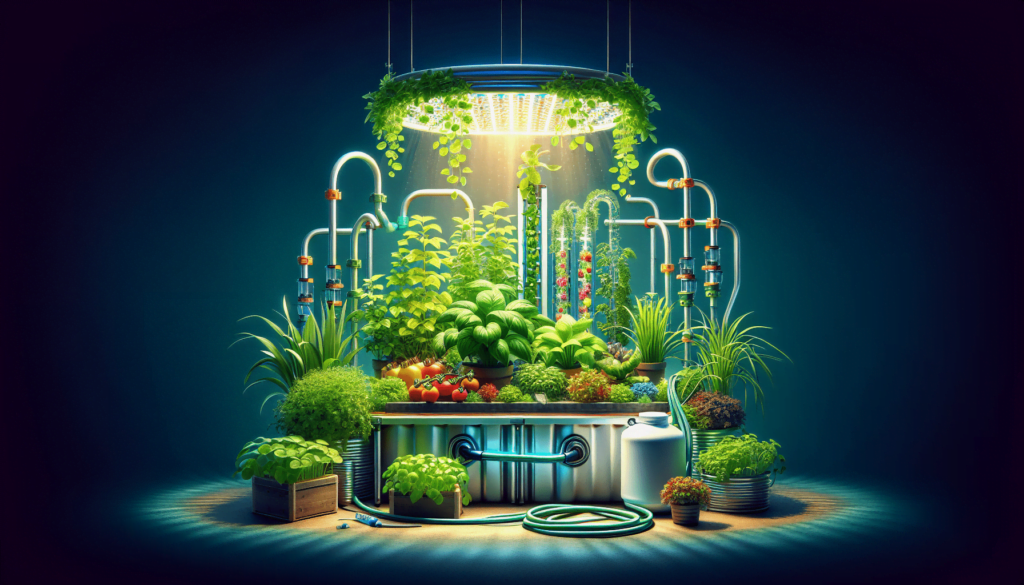As cat lovers and avid gardeners, we know just how much joy growing catnip can bring to your life and your feline friends. But do you realize it’s possible to produce it at home using hydroponics – a soil-less growing method using water and nutrient solution? This article, “The Ultimate Guide to Cultivating Catnip Using Hydroponics”, is a treasure trove meant for you. Encompassing all the knowledge and steps vital for successfully growing catnip via hydroponics, this guide leads you through the process. This journey of cultivation does not just promise a richer, more potent catnip, but also enhances your bond with your beloved pets along the way.

Understanding Catnip Plant
Hello there! As fellow plant enthusiasts, we’re here to help you understand more about the amazing catnip plant. Commonly known as ‘cat mint’, catnip is a perennial herb that’s part of the mint family, characterized by its quadrangular stems and greyish-green leaves. It’s renowned world over for the intoxicating effect it has on felines but less known are its myriad uses for us humans and its growth characteristics.
General features of Catnip
From a botanical perspective, catnip is quite inviting. It has heart-shaped leaves with scalloped edges and blooms with lavender, pink, or white flowers from late spring to early autumn. Standing at a height of about three feet, it also emits a unique aroma due to the presence of ‘nepetalactone,’ the very organic compound that drives cats into frenzy.
Health benefits and uses
Aside from entertainment for cats, catnip has numerous human uses too. We can harness its many health benefits which include easing headaches, reducing anxiety, and aiding digestion. When brewed as a tea, it is quite calming and serves as a potent sleep aid.
Ideal environment for growth
As for its growth, catnip is quite hardy and thrives naturally in a variety of climates. Originally from Europe, it has now spread across every continent. It prefers well-drained soil and full to partial sun exposure.
Common pests and diseases
Though attractive to cats, catnip also unfortunately lures pests like aphids, weevils, and spider mites. Fungal diseases like mint rust could also prove problematic but nothing that timely observation and regular maintenance won’t fix.
Understanding Hydroponics
Now, let’s switch gears and talk about an increasingly popular plant cultivation method—hydroponics.
Definition and explanation of hydroponics
Hydroponics is a soil-less method of growing plants by supplying them with nutrients through water. It’s a practice that traces back centuries, allowing us to control the growing conditions like temperature, light, and most importantly, the nutrient availability.
Types of hydroponic systems
There are several types of hydroponic systems—Deep Water Culture (DWC), Nutrient Film Technique (NFT), aeroponics, and ebb and flow systems—just to name a few. Each has its unique characteristics and application depending on the plants you wish to grow.
Benefits of Hydroponic farming
The wonderful thing about hydroponics is that it allows plants to use energy more efficiently since they have access to nutrition without needing to develop extensive root systems. This leads to faster growth rates and higher plant yields compared to traditional farming. It’s also more water-efficient and eliminates many soil-borne diseases and pests.
Challenges of hydroponics
However, as with any farming method, hydroponics is not without challenges. It requires careful planning, a relatively high startup cost, a reliable power source, and constant monitoring of nutrient levels and pH. Moreover, it does need a bit of technical know-how, but rest assured, it’s quite manageable and well worth the effort!
Getting Started with Hydroponics
Enough about what and why. Let’s delve inside the how?
Securing resources: Lights, pumps, nutrient solutions, etc.
To start, you’ll need certain equipment and resources like grow lights, pumps, and nutrient solutions. Grow lights are essential for indoor farming, providing the necessary spectrum of light for photosynthesis. Pumps serve for aeration and circulation of nutrients while nutrient solutions are the lifeblood of hydroponic systems, providing the necessary minerals for plant growth.
Setting up your hydroponic system
Setting up your system depends on the type you’ve chosen. For example, DWC involves suspending plants in a nutrient solution with the roots submerged in it, while NFT has a film of nutrient solution constantly flowing over the roots. Each system has its steps to set up and, although it may seem daunting initially, it gets easier with practice, we promise!
Choosing the perfect location
Location plays a vital role as well. Your hydroponic system would need a place with easy access to water, electricity, and ideally, natural light. This could be a spare room, garage, or outdoors. The key is maintaining the right temperature, humidity, and lighting for optimal plant growth.
Safety measures and precautions
Safety is of the utmost importance. Carefully manage wiring to prevent accidents, ensure the water tanks are clean to avoid disease, and use gloves and masks when handling nutrient solutions.
Planting Catnip in Hydroponics
Imagine blending the allure of catnip with the efficiency of hydroponics. Let’s see how.
Preparing the catnip seeds for planting
Start by preparing the catnip seeds. Soak them in water for 24 hours before planting to encourage germination.
Plantation process in hydroponics
In a hydroponic system, instead of soil, you would use growing mediums such as perlite, rockwool, or coconut coir. Simply place the germinated seeds in a net pot filled with the chosen medium and introduce it to your hydroponic system.
Ideal temperature, light and pH conditions
Catnip thrives in temperatures between 15-20°C (60-70°F) during the day and no lower than 10°C (50°F) at night. Aim for a pH of 6.0 – 7.0, and ensure adequate light, about 10 – 12 hours each day.

Nutrient Requirements of Catnip
Feeding your catnip with the right nutrients is pivotal for its growth. Here’s what you need to know.
Understanding the nutrient needs of the catnip
For catnip, you will need nitrate, potassium, phosphate, calcium, and minor nutrients like iron, magnesium, and zinc.
Types of nutrient solutions
There are pre-mixed solutions available in the market which you can directly add to your water solution, or you can prepare your own mix, taking care to get the ratios right.
Feeding frequency and quantity
Feed your catnip a diluted nutrient solution during its seedling stage, gradually strengthening it as the plant grows. Beware, overfeeding is as harmful as underfeeding!
Troubleshooting nutrient deficiencies
Learning to recognize signs of deficiencies is essential. Yellowing leaves could indicate a nitrogen deficiency, for instance. Rectify by adjusting the nutrient solution accordingly.
Common Problems and Solutions
Growing catnip hydroponically does come with possible challenges. But fear not! We’ve got the solutions.
Identifying common problems of catnip in hydroponics
Some common issues include root rot, wilting, and slow growth. These could stem from improper pH, over/underfeeding nutrients, or inadequate lighting.
Addressing nutrient deficiencies
Adjust the nutrient solution if deficiencies are spotted. Ensure you balance the nutrients as too much of one nutrient could block the uptake of another.
Disease control
Hydroponics generally has fewer diseases, but still maintain cleanliness, use clean water, and ensure proper aeration to keep diseases at bay.
Pests and their control
Pests can be controlled by introducing beneficial insects, using organic sprays, and maintaining the temperature and humidity that’s unfavorable for pests.
Growth Monitoring and Optimization
Let’s see how we can help your catnip plant flourish optimally.
Monitoring growth progress
Check the progress regularly. Look out for vibrant green leaves, sturdy stems, and watch the root health for a ‘pinkish-white’ color, indicating good health.
Adjusting environmental conditions
If the growth seems stunted or leaves yellow, adjust the light, temperature, humidity, and nutrient solution as required.
Optimizing growth through training and pruning techniques
Train your catnip plant using techniques like topping and pruning to promote bushier growth and higher yields.
Harvesting strategies and signs of maturity
As your catnip matures, its leaves will look more full and vibrant. It’s typically ready for harvest between 75-90 days.
Harvesting Your Catnip
Watching your catnip ready for harvest is a joyous sight. Let’s ensure we do it right!
Best time to harvest catnip
The ideal time is early morning when the dew has evaporated but before the full heat of the day.
Harvesting techniques
Using sharp, clean clippers, cut the stems above a pair of leaves to encourage more branching.
Storing and preserving catnip
After harvesting, dry the leaves under a shade and store them in a cool, dry place.
Catnip uses and its demand in the market
Aside from the beloved cat toy filler, catnip is also in demand for use in teas, as an herbal remedy, and in gardening as an insect repellent.
Recycling and Maintenance of Hydroponic System
To ensure your hydroponic system serves you well, regular recycling and maintenance is essential.
Regular check-ups and maintenance of the system
Regularly check the growing mediums, pH, nutrient balance, pump, and fixtures for any signs of wear or malfunction.
Cleaning and recycling the nutrient solution
Every fortnight, flush out the old nutrient solution, clean the system with a mild bleach solution, and replace it with fresh nutrient solution.
Replacing the growth medium
Replace degraded growth mediums immediately to prevent nutrient imbalances and waterlogging.
Extending your hydroponic system
If you’ve got the hang of hydroponics, why not extend your system to accommodate more plants? It’s a sustainable and efficient way of growing!
Future of Hydroponics and Catnip
From our standpoint, the future looks ‘green’ for both hydroponics and catnip!
Expected trends in hydroponics cultivation
With increasing environmental concerns and space constraints, hydroponics is gaining popularity. More sophisticated systems are being developed and even home gardeners are embracing this form of cultivation.
Innovation and technology in hydroponics
From automatic pH maintaining systems to IoT enabled growth monitors, technology is increasingly playing a role in hydroponics, making it even more accessible and efficient.
The demand and popularity of catnip
Given its appeal to cats and its myriad human uses, we predict the demand for catnip will continue to rise.
Environmental impact of hydroponic farming
By using less water, eliminating agricultural runoff, and making even urban spaces productive, hydroponics is paving the path for sustainable agriculture.
We hope we’ve successfully piqued your interest in the fascinating world of growing catnip hydroponically. As we’ve discovered, it’s a venture that’s engaging, educative and enormously rewarding. Happy cultivating!
Forum
Got something to share or a question to ask? Jump in and start a conversation! Whether it’s tips, advice, or just sharing your experiences, we’d love to hear from you. Don’t be shy—your input could inspire or help someone else!- This forum has 1 topic, and was last updated 9 months, 3 weeks ago by .
- Topic
- Voices
- Last Post
- You must be logged in to create new topics.


